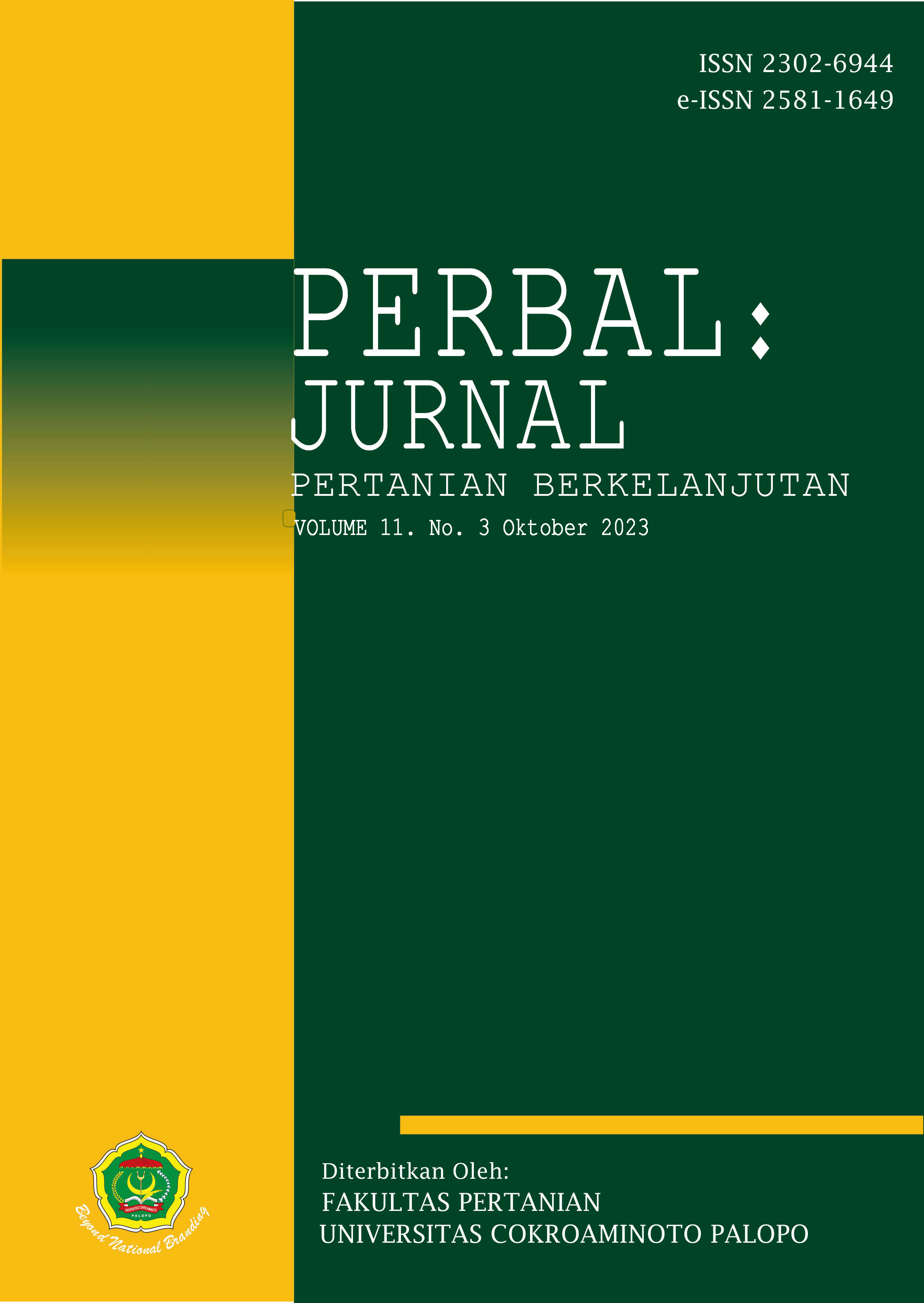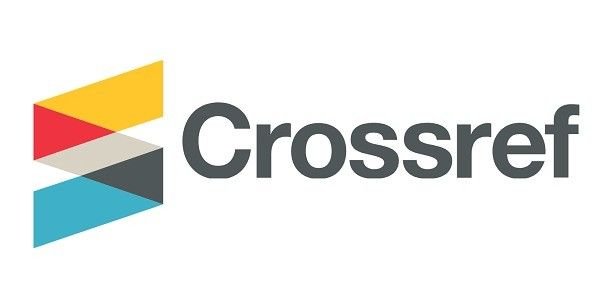Analisis Risiko Rantai Pasok pada Industri Pengolahan Sagu Basah di Desa Bunga Eja dengan Metode Supply Chain Operation Reference (SCOR) dan House of Risk (HOR)
Analysis of Supply Chain Risk in the Sago Processing Industry in Bunga Eja Village Using the Method Supply Chain Operation Reference (SCOR) and House of Risk (HOR)
DOI:
https://doi.org/10.30605/perbal.v11i3.3356Keywords:
analisis risiko, rantai pasok, saguAbstract
Tujuan penelitian ini untuk mengidentifikasi rantai pasok yang terjadi pada industri pengolahan sagu basah dengan menggunakan metode Supply Chain Operation Reference (SCOR) dan untuk menganalisis risiko dengan melakukan penilaian risiko rantai pasok pada industri pengolahan sagu basah dengan menggunakan metode House of Risk (HOR). Penelitian ini dilaksanakan di Desa Bunga Eja Kecamatan Kamanre Kabupaten Luwu pada bulan Juli – Agustus 2023. Teknik analisis data menggunakan metode Supply Chain Operation Reference (SCOR) dan House of Risk (HOR). Hasil penelitian menunjukkan bahwa terdapat sembilan belas risk event dan dua puluh satu risk agent pada risiko rantai pasok yang terjadi pada industri pengolahan sagu basah. Hasil analisis risiko rantai pasok menunjukkan bahwa terdapat empat prioritas risk agent atau sumber penyebab risiko yakni (A8) kerusakan mesin dan peralatan produksi, (A10) ketersediaan air bersih untuk proses produksi, (A3) modal usaha masih kurang, dan (A2) bahan baku mulai berkurang.
The purpose of this study is to identify the supply chain that occurs in the wet sago processing industry using the Supply Chain Operation Reference (SCOR) method and to analyze risk by conducting a supply chain risk assessment in the wet sago processing industry using the House of Risk (HOR) method. This research was conducted in Bunga Eja Village, Kamanre District, Luwu Regency from July to August 2023. Data analysis techniques used the Supply Chain Operation Reference (SCOR) and House of Risk (HOR) methods. The results showed that there were nineteen risk events and twenty one risk agents in the supply chain risk that occurred in the wet sago processing industry. The results of supply chain risk analysis show that there are four priority risk agents or sources of risk, namely (A8) damage to production machinery and equipment, (A10) availability of clean water for the production process, (A3) insufficient business capital, and (A2) raw materials starting to decrease.Downloads
References
Achmad, R.E. dan Mansur, A. (2018). Design mitigation of blood supply chain using supply chain risk management approach. Proceedings IEOM Society International, Bandung, March 6-8: 1763-1772.
Arif , M., Purwangka, F., dan Muninggar, R. (2020). Analisis risiko perencanaan industri pengolahan ikan di Pelabuhan Perikanan Samudera (PPS) Kutaraja. Jurnal Akuatika Indonesia, Vol. 5 (2): 55-60. DOI: https://doi.org/10.24198/jaki.v5i2.27635
Bantacut. (2011). Sagu: Sumberdaya untuk Penganekaragaman Pangan Pokok. Fakultas Teknologi Pertanian IPB. Bogor.
Bustaman, S. (2008). Strategi pengembangan bio-etanol berbasis sagu di Maluku. Perspektif. Vol. 7 (2): 65-79.
Gultom, S.O., Mess, T.N., dan Silamba, I. (2018). Pengaruh penggunaan beberapa jenis media filtrasi terhadap kualitas limbah cair ekstraksi sagu. Jurnal Agrointek. Vol. 12 (2). DOI: https://doi.org/10.21107/agrointek.v12i2.3805
Hadi, J.A., Febrianti, M.A., Yudhistira, G.A., dan Qurtubi. (2020). Identifikasi risiko rantai pasok dengan metode House of Risk (HOR). Jurnal Performa: Media Ilmiah Teknik Industri. Vol. 19 (2): 85-94. DOI: https://doi.org/10.20961/performa.19.2.46388
Hariharan, G., Suresh, P., dan Nagarajan, S. (2018). Supply chain risk mitigation strategies and its performance of SMEs. International Journal of Pure and Applied Mathematich. Vol. 119 (15): 3545-3553.
Heizer, J. dan Render, B. (2011). Manajemen Operasi. Buku Dua. Edisi Sembilan. Selemba Empat. Jakarta.
Nadhira, A.H.K., Oktiarso, T., dan Harsoyo, T.D. (2019). Manajemen risiko rantai pasok produk sayuran menggunakan metode supply chain operation reference dan model house of risk. KURAWAL Jurnal Teknologi, Informasi dan Industri. Vol. 2 (2). DOI: https://doi.org/10.33479/kurawal.v2i2.260
Pongoh, M. (2016). Analisis Penerapan Manajemen Rantai Pasokan Pabrik Gula Aren Masarang. Jurnal EMBA: Jurnal Riset Ekonomi, Manajemen, Bisnis dan Akuntansi. Vol. 4 (2):170-181.
Pujawan, I.N., dan Geraldin, L.H. (2009). House of risk: a model for proactive supply chain risk management. Departement of Industrial Engineering Sepuluh Nopember Institute of Technology: 953-967. DOI: https://doi.org/10.1108/14637150911003801
Rahmadani, F., Sulaeman, R., dan Darlis, V.V. (2018). Pola distribusi pemasaran sagu (Metroxylon sp.) di Desa Mekar Sari Kecamatan Merbau Kabupaten Kepulauan Meranti. Jurnal Ilmu Kehutanan Faperta UR. Vol. 2 (2).
Reniana, Tethool, E.F., Purwantana, B., dan Markumningsih, S. (2019). Kajian proses pengolahan sagu dengan mesin pengekstrak sagu model pengaduk berulir. Prosiding SNST ke-10 Fakultas Teknik Universitas Wahid Hasyim. Yogyakarta. Vol. 1 (1): 89-94.https://www.publikasiilmiah.unwahas.ac.id/index.php/PROSIDING_SNST_FT/article/view/2827 [Diakses] 2 September 2023. DOI: https://doi.org/10.36499/psnst.v1i1.2827
Rizky, A.M. (2020). Analisis Mitigasi Risiko Rantai Pasok Menggunakan Metode HOR (House Of Risk) (Studi Kasus: Kawasan Sentra Industri Pengolahan Kerajinan Logam Pandai Besi Desa Kajar I, Karang Tengah, Wonosari, Gunung Kidul). Universitas Islam Indonesia. Yogyakarta.
Sumantri. (2022). Analisis pendapatan usaha pengolahan sagu di Kelurahan Jaya Kecamatan Tellu Wanua Kota Palopo. Perbal: Jurnal Pertanian Berkelanjutan. Vol. 10 (1): 42–52. DOI: https://doi.org/10.30605/perbal.v10i1.1522
Timisela, N.R., Masyhuri, Darwanto, D.H., dan Hartono, S. (2014). Manajemen rantai pasok dan kinerja agroindustri pangan lokal sagu di Propinsi Maluku: Suatu Pendekatan Model Persamaan Struktural. Jurnal Agritech. Vol. 34 (2).
Zaroni. (2015). Supply Chain Indonesia, Manajemen Risiko Rantai Pasok dalam Model SCOR [Online] di: http://supplychainindonesia.com/new/manajemen-risiko-rantai-pasok-dalam-model-scor/, [Diakses] 2 September 2023
Downloads
Published
Issue
Section
License
In submitting the manuscript to the journal, the authors certify that:
- They are authorized by their co-authors to enter into these arrangements.
- The work described has not been formally published before, except in the form of an abstract or as part of a published lecture, review, thesis, or overlay journal.
- That it is not under consideration for publication elsewhere,
- That its publication has been approved by all the author(s) and by the responsible authorities – tacitly or explicitly – of the institutes where the work has been carried out.
- They secure the right to reproduce any material that has already been published or copyrighted elsewhere.
- They agree to the following license and copyright agreement.
License and Copyright Agreement
Authors who publish with Onoma Journal: Education, Languages??, and Literature agree to the following terms:
- Authors retain copyright and grant the journal right of first publication with the work simultaneously licensed under Creative Commons Attribution License (CC BY 4.0) that allows others to share the work with an acknowledgment of the work's authorship and initial publication in this journal.
- Authors are able to enter into separate, additional contractual arrangements for the non-exclusive distribution of the journal's published version of the work (e.g., post it to an institutional repository or publish it in a book), with an acknowledgment of its initial publication in this journal.
- Authors are permitted and encouraged to post their work online (e.g., in institutional repositories or on their website) prior to and during the submission process, as it can lead to productive exchanges, as well as earlier and greater citation of published work.














